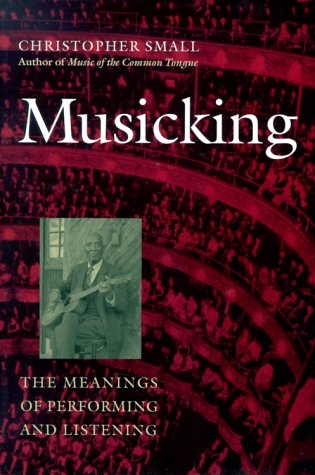Nils L. Wallin, Björn Merker, Steven Brown (eds.): The Origins of Music (1999)
Filed under book | Tags: · biology, biomusicology, cognition, ethnomusicology, evolution, language, linguistics, music, music history, music theory, neuroscience, sound recording

What biological and cognitive forces have shaped humankind’s musical behavior and the rich global repertoire of musical structures? What is music for, and why does every human culture have it? What are the universal features of music and musical behavior across cultures? In this groundbreaking book, musicologists, biologists, anthropologists, archaeologists, psychologists, neuroscientists, ethologists, and linguists come together for the first time to examine these and related issues. The book can be viewed as representing the birth of evolutionary biomusicology—the study of which will contribute greatly to our understanding of the evolutionary precursors of human music, the evolution of the hominid vocal tract, localization of brain function, the structure of acoustic-communication signals, symbolic gesture, emotional manipulation through sound, self-expression, creativity, the human affinity for the spiritual, and the human attachment to music itself.
Contributors: Simha Arom, Derek Bickerton, Steven Brown, Ellen Dissanayake, Dean Falk, David W. Frayer, Walter Freeman, Thomas Geissmann, Marc D. Hauser, Michel Imberty, Harry Jerison, Drago Kunej, François-Bernard Mâche, Peter Marler, Björn Merker, Geoffrey Miller, Jean Molino, Bruno Nettl, Chris Nicolay, Katharine Payne, Bruce Richman, Peter J. B. Slater, Peter Todd, Sandra Trehub, Ivan Turk, Maria Ujhelyi, Nils L. Wallin, Carol Whaling.
Publisher MIT Press, 2001
Bradford Books series
ISBN 0262731436, 9780262731430
512 pages
PDF (updated on 2012-8-3)
Comment (1)Christopher Small: Musicking: The Means of Performing and Listening (1998)
Filed under book | Tags: · aesthetics, culture, ethnomusicology, music, philosophy

Extending the inquiry of his early groundbreaking books, Christopher Small strikes at the heart of traditional studies of Western music by asserting that music is not a thing, but rather an activity. In this new book, Small outlines a theory of what he terms “musicking,” a verb that encompasses all musical activity from composing to performing to listening to a Walkman to singing in the shower.
Using Gregory Bateson’s philosophy of mind and a Geertzian thick description of a typical concert in a typical symphony hall, Small demonstrates how musicking forms a ritual through which all the participants explore and celebrate the relationships that constitute their social identity. This engaging and deftly written trip through the concert hall will have readers rethinking every aspect of their musical worlds.
Publisher Wesleyan University Press, 1998
ISBN 0819522570, 9780819522573
Length 230 pages
Veit Erlmann (ed.): Hearing Cultures. Essays on Sound, Listening and Modernity (2004)
Filed under book | Tags: · acoustics, ethnomusicology, listening, modernity, music, sound recording

Vision is typically treated as the defining sense of the modern era and a powerful vehicle for colonial and postcolonial domination. This is in marked contrast to the almost total absence of accounts of hearing in larger cultural processes.
Hearing Cultures is a timely examination of the elusive, often evocative, and sometimes cacophonous auditory sense – from the intersection of sound and modernity, through to the relationship between audio-technological advances and issues of personal and urban space. As cultures and communities grapple with the massive changes wrought by modernization and globalization, Hearing Cultures presents an important new approach to understanding our world. It answers such intriguing questions as:
· Did people in Shakespeare’s time hear differently from us?
· In what way does technology affect our ears?
· Why do people in Egypt increasingly listen to taped religious sermons?
· Why did Enlightenment doctors believe that music was an essential cure?
· What happens acoustically in cross-cultural first encounters?
· Why do Runa Indians in the Amazon basin now consider onomatopoetic speech child’s talk?
The ear, as much as the eye, nose, mouth and hand, offers a way into experience. All five senses are instruments that record, interpret and engage with the world. This book shows how sound offers a refreshing new lens through which to examine culture and complex social issues.
Publisher Berg Publishers, 2004
Sensory Formations series
ISBN 1859738281, 9781859738283
239 pages
PDF (updated on 2012-8-3)
Comment (0)
